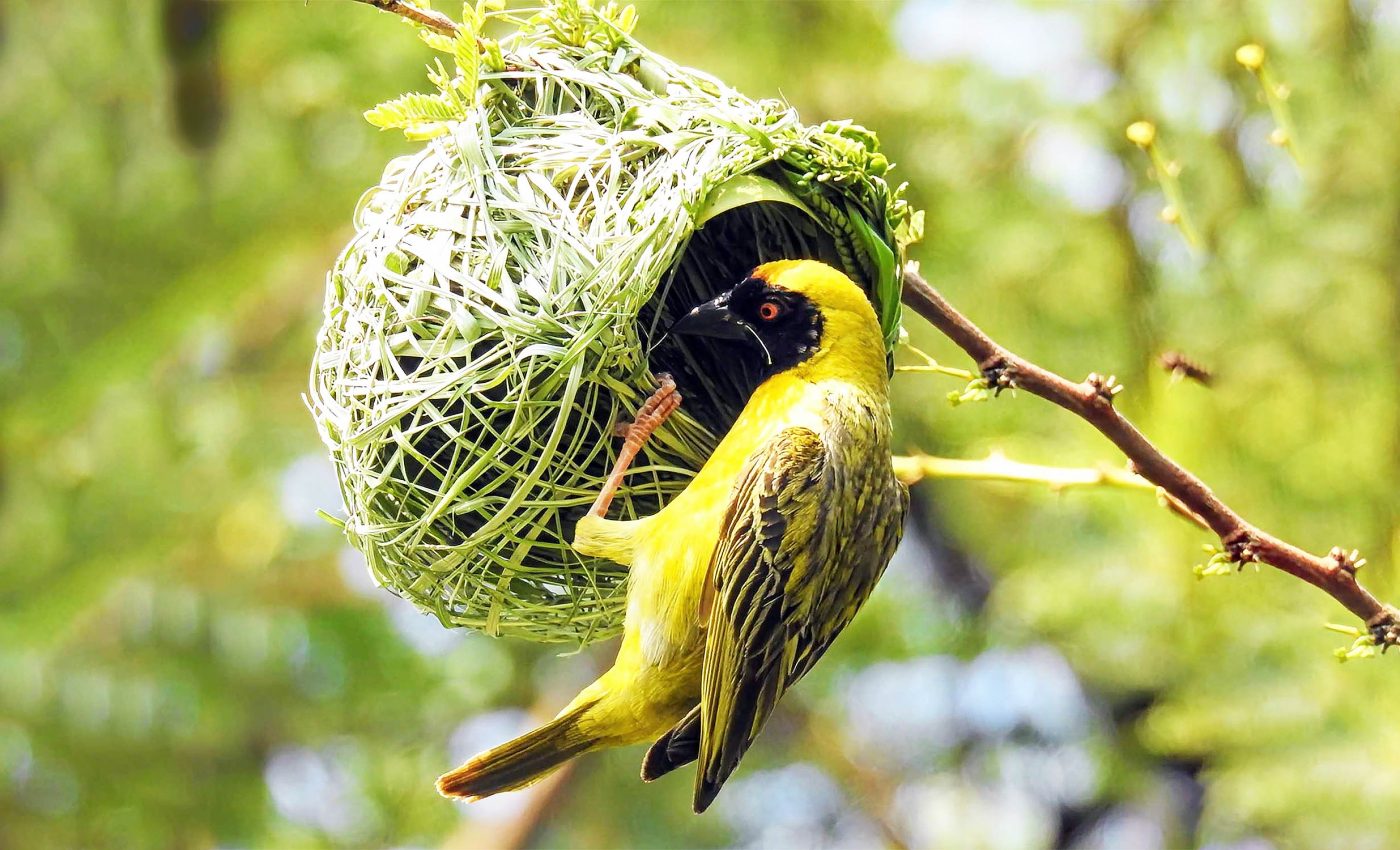
Weaver birds build strikingly unique nests
Did you know that every bird nest you spot in a tree is a unique form of artwork? And imagine this, the creators of these delicate constructions are our very own feathered friends.
The nests are a manifestation of the birds’ ingenuity and survival instincts, and proof of nature’s boundless creativity.
Recent research has focused on one fascinating species – the white-browed sparrow weavers – and their distinctive nest-building practices.
Unique nests of sparrow weavers
In the sweeping vistas of the Kalahari Desert, where the air is dry, and conditions harsh, thrives a species of bird known for their distinctive nest building abilities. Enter the white-browed sparrow weavers.
A team of biologists from the University of St Andrews set out on a two-year expedition to observe the nest-building behaviors of these hardy birds.
Birds, like humans, have their unique styles, whether it’s singing or foraging. But the sparrow weavers stand out because they have an exclusive nest-building style. The research team captured hours of footage of these birds, collectively creating over 450 nests.
The nests were painstakingly built using grass and were all single-occupancy, making the observational opportunities plentiful.
A nest passed down through generations
All the groups that the researchers observed lived in the same general area with similar habitat conditions and had identical genetic makeup.
Yet, the nests they built were strikingly different from each other. Some groups built short and thick nests with minimal embellishment, while others chose long, complicated entrance and exit pathways.
These differences couldn’t be chalked up to natural variables such as wind or temperature, leading the researchers to believe that these styles were passed down across generations.
Moreover, with no change in habitat or environmental conditions, the sparrow weaver groups retained their unique styles over the years.
This remarkable consistency suggests a behavior that’s transmitted across generations but isn’t genetically encoded. It’s a thread that ties the past to the future, a story told from one generation to the next.
Nest-building behavior of sparrow weavers
An intriguing aspect of the white-browed sparrow weavers’ nest-building behavior is the influence of their social structures.
Unlike many bird species that exhibit solitary nesting habits, sparrow weavers often collaborate in groups, which significantly impacts their architectural choices.
The research indicated that within these cooperative groups, the roles in nest building were not only shared but also varied by individual proficiency. Certain birds, for instance, might excel at weaving while others were adept at gathering materials.
This collaboration creates a dynamic learning environment, whereby younger birds observe and emulate their more experienced counterparts, leading to an informal education in nest construction techniques that adds to the distinct styles observed.
Environmental challenges faced by weavers
The design and structure of nests also reflect the environmental challenges the sparrow weavers face in the Kalahari. These birds must contend with not only the scarcity of materials but also ongoing threats from predators and the harsh elements.
As a result, their nesting strategies are not only artistic but also practical and adaptive. The researchers noted that nests with elaborate entrances and exits often correlated with higher survival rates, as these designs provided birds with immediate camouflage and evasion opportunities.
This adaptability to their environment underscores an essential principle of natural selection: the need for efficiency in survival intricately woven into the very fabric of their creative expression.
Understanding avian behavior
The intrigue surrounding the white-browed sparrow weavers extends beyond their remarkable nest-building practices; it also highlights the importance of human observation in understanding avian behavior.
The meticulous research highlights how dedicated observation can yield insights into the complexities of avian life. Through the lens of modern technology, such as high-definition cameras and drones, researchers are able to capture behaviors that may go unnoticed in casual observation.
This technology not only enhances our understanding of these birds but also promotes a deeper appreciation for biodiversity and the intricate web of life that surrounds us.
By promoting a connection between scientists and the natural world, the research advocates for conservation efforts and encourages citizen science participation, ultimately benefiting both the sparrow weavers and the ecosystems they inhabit.
Social dynamics of sparrow weavers
The study paints a vivid picture of avian life in the wild. It sheds light on the incredibly sophisticated group dynamics among birds and opens up fascinating questions about animal behavior.
Is it possible that these little birds have their own culture? Can we call these nest-building styles an avian “tradition”?
The white-browed sparrow weavers, with their unique nest-building styles, show us that nature is full of surprises if we just take the time to observe. What other secrets do these little architects hide? Only time, and further exploration will tell.
The study is published in the journal Science.
—–
Like what you read? Subscribe to our newsletter for engaging articles, exclusive content, and the latest updates.
Check us out on EarthSnap, a free app brought to you by Eric Ralls and Earth.com.
—–













